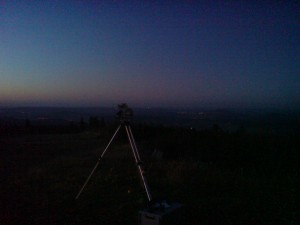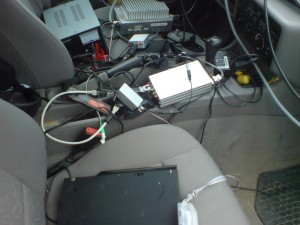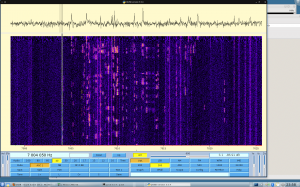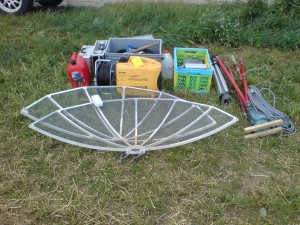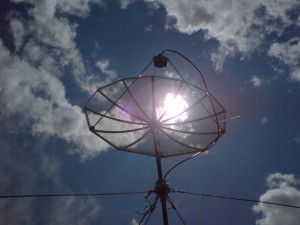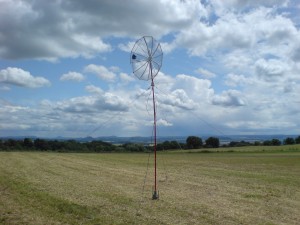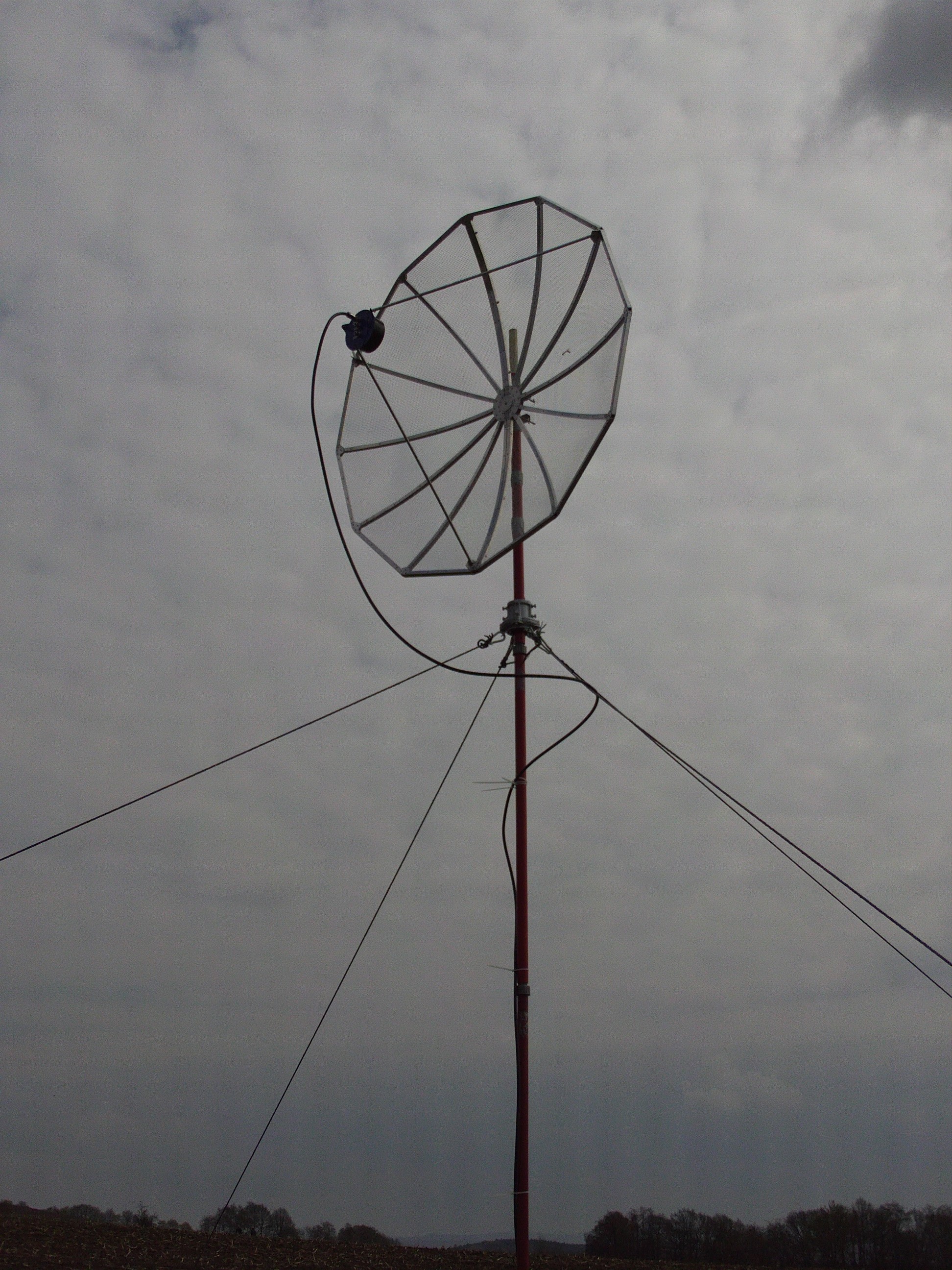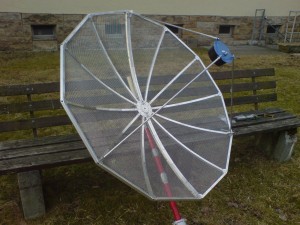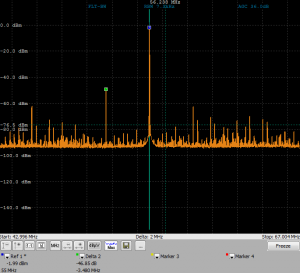Last weekend another DUR activity from Triebenberg JO61XA. This time 23cm only. I did not modify anything in my setup.
The conditions were better than usually but degraded during the 3 hours. I was able to work OZ3ZW, HA8MV/p and also DL7QY just to name the 3 most far stations out of 22 QSO.
In the end this was a new record for me from JO61XA with a sum of more than 3000km.
The other side of the medal: usually the far stations are just workable after a ping in KST chat. Fortunately i could work OK2UYZ and DH7OT random this time. On the other hand this activity contest should gain some activity on the bands and this it achieves with and without chat.
I think now i need to improve my station again now. Probably some more power on 23cm. 10GHz and 24GHz are in the pipe but it depends on my spare time when i will complete them. At least W1GHZ promised to send me one of his nice dual-band feedhorns.
Category Archives: Amateur Radio
new laser ODX, 43km
During UHF/SHF Contest from JO60LK i had a new contact with DK5WMA in JO60MT.
The new distance is around 43km and a new ODX for me. The signals were really strong this time and it paid out to move
the RX PCB and the detector to metal boxes. No radio demodulation anymore and ufb AM QSO,
Later on it worked also with DO1CTL and during the night with DH0LS.
The picture shows my laser station and the green point from DK5WMA in the middle of the foto.
September DUR
Last weekend i had another try in the DUR activity. I was qrv on 23cm only. The result was quite good. First time i was able to work HA8MV/P with my 15watts. When bringing down the antenna i faced strong rain.
Before the contest i fixed the RX part of my transverter and i made the voice keyer system as well as the headset connection working. Now operation is much more comfortable.
ST0R pileup
June 2011 DUR activity
DRM reception with N2ADR frontend
The following video shows a reception test of a shortwave DRM station using the direct sampling frontend designed by N2ADR. The SDR software Quisk allows for adjustable filter bandwidth up to 21kHz from version 3.5.2.
The soundcard output was fed into another PC’s soundcard. There DREAM DRM software decoder was running.
DUR April 2011
Today another DUR contest. I tested my new 1.5m mesh dish made by DG0CN. Some new qso were possible with the higher gain of the antenna. Also did some qso on 24GHz. Overall a good result. After the contest i also heard fragments from HA8MV. This was never before possible. Otherway around i would need some more output power i guess.
Special thanks for the qso to DL7QY, OM5CM, DJ1LP.
New antenna (1.5m mesh dish)
Yesterday i got my new 1.5m mesh dish (Drahtgitterspiegel) from Funktechnik Liebal http://www.funktechnik-liebal.de/. It can be splitted into two parts for transport.
The 3-band feed i will get soon supports 23cm/13cm/9cm. So there is room for extending the portable rig.
The foto shows the dish with a 13cm feed.
N2ADR frontend TX measurements
After bringing up the transmitter section of my N2ADR frontend i measured some IMD and spectral purity data.
Quisk has a nice feature to create very clean measurement tones internally. This makes measurements very easy.
The amplifier after the TX DAC is a BGA6589 supplied with 80mA out of a 7.5V source.
When not driving the DAC with full power i see really good IMD figures. IMD3 around -45dB below the wanted signal.
With full drive the IMD3 decreases to around -20dB. (The figures were taken with 20dB attenuator between frontend and measurement receiver!)
When looking to lower frequencies (lets say below 10MHz) and transmission of a sine carrier the spectral purity looks rather good. The next figure shows a 40M signal which gets around -110dB noise 100Hz off the transmission frequency.
At the upper edge of the frequency range of the frontend the situation becomes significantly worse. The internal digital oscillator seems to create many spurs over a wide frequency range.
For low output frequencies the wideband spectrum looks rather promising except for the overtones. But the TX signal was completely unfiltered after the DAC. So proper lowpass filters for every band will be necessary anyway. Probably also the input of the MMIC was a bit overdriven. I did not check this so far.
Looking to the spectrum that would fall inside the amateur band during real world operation another effect appeared. Independant which frequency is used there are symmetric spurs left and right of the TX spectrum. Two at +-52kHz and two (with more noise) at +-61kHz. Currently it is not clear if these come from internal circuits of from the power supply. Probably both ?
Overall the performance is already rather good. Especially at the top end of the frequency range there is range for improvement which is necessary to make the frontend a good choice for usage with transverters for VHF/UHF contest operation.
DM7A march V/U/SHF contest video
Video recorded during march 2011 V/U/SHF contest operation of the DM7A team in JO60OM.

